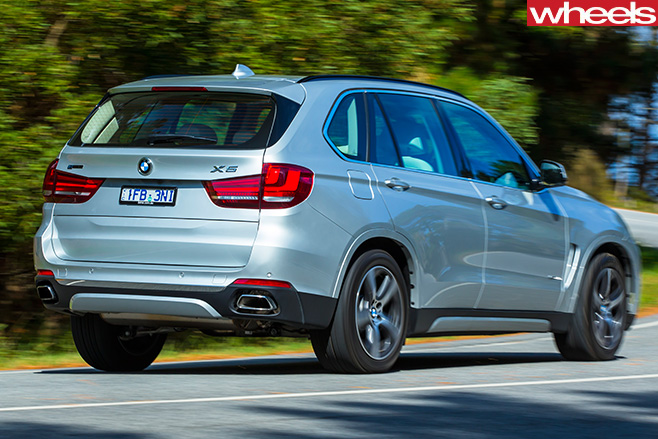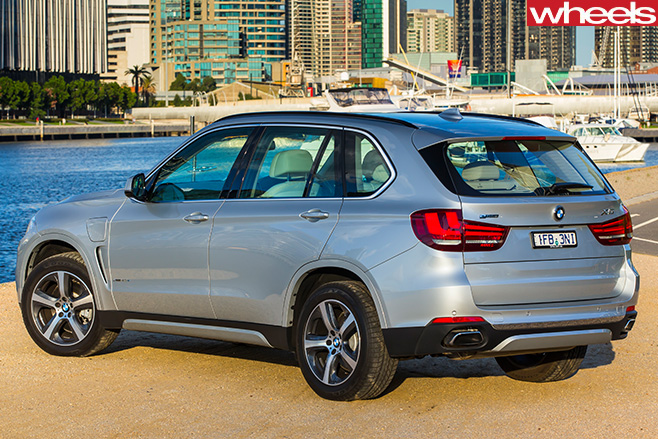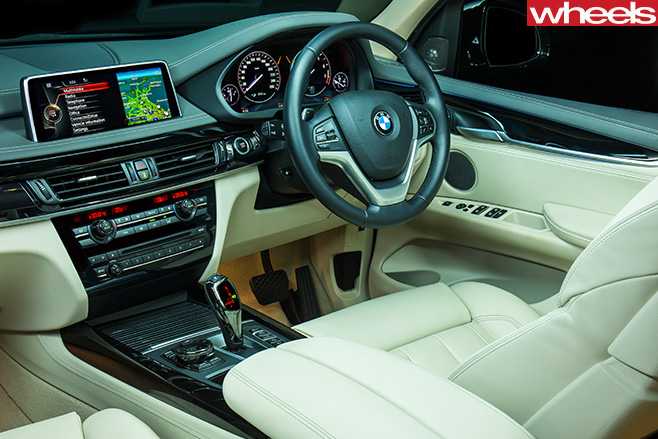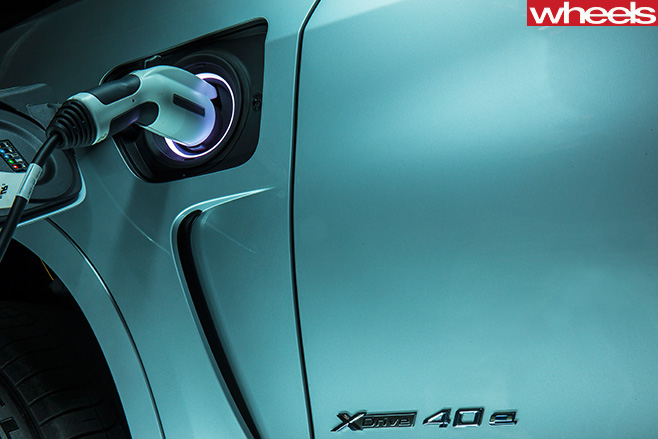Is a plug-in hybrid version of the sharply dynamic X5 nothing but dead wood when it comes to BMW’s green cred?
WHAT IS IT? A petrol-electric plug-in hybrid version of BMW’s large SUV
WHY WE’RE DRIVING IT BMW’s COTY-winning BMW i3, and the BMW i8 supercar show that the company is at the cutting edge in terms of hybrid and electric powertrain technology, so we’re keen to learn if the transfer of this tech to its conventional models continues the form.
MAIN RIVALS Porsche Cayenne S E-Hybrid. From the third quarter of 2016 there will also be the Audi Q7 e-tron and the Mercedes Benz GLE500e (which adds plug-in hybrid tech to a twin-turbo petrol V6).

THE WHEELS REVIEW THE main issue with cutting-edge technology, as best as I can tell, is how quickly its once-gleaming edge can become dulled. What was yesterday’s Brilliant Bright Shiny Thing is today’s discontinued obsolescence, and tomorrow’s landfill.
So where, we wonder, does that leave BMW with its relatively late-to-the party X5 xDrive40e, the plug-in hybrid variant of what was last year’s top-selling premium SUV? The tech fundamentals are fairly familiar. The xDrive 40e takes the company’s 2.0-litre turbo four cylinder petrol engine and integrates an electric motor between it and an eight-speed automatic transmission. The underfloor area in the boot loses the space-saver spare tyre and rises 40mm to accommodate a 96-cell, 9kWh lithium-ion battery pack. Load space with the seats folded remains vast at 1720 litres.

In operational terms, it typically goes like this: You plug the car into a conventional domestic power supply and allow it five hours to reach maximum charge. This charging time is roughly halved if you have an installer fit a high-output wall box, or halved again if you plug in at a public charging station. That full charge will give you, according to our test loop, around 24km of electric-only propulsion if you select the MAX eDrive mode, which bars assistance from the petrol engine unless the throttle is kicked to the firewall. If 24km doesn’t sound like much result for five hours tethered to a wall, that because it’s not. Depending on traffic and speed limits, it typically equates to less than 30 minutes of driving time. But BMW points out that most city dwellers only commute 32km each day, and half of people drive just 20 or so. The message is that the XDrive 40e has mostly enough EV capability for most people’s commuting needs. But it’s not exactly what you’d call a generous electric-only range.
More encouraging is the seamlessness with which the two power sources merge or decouple when the car is operated in the default Auto eDrive setting. Here it uses the most efficient combination of available power; more electric (if the battery is sufficiently charged, of course) around town, and mostly petrol power for highway cruising. Naturally there’s a Save mode to preserve battery power; if you’re leaving your charging point and heading straight onto a highway, for example, it makes more sense to preserve the battery’s power until you’re back in stop-start city driving.

So, as you’d expect from BMW, the powertrain, for all its complexity and weight, does exactly what you’d expect of it, and there’s sophisticated unobtrusiveness about its operation that has plenty of appeal. Beyond that, though, there are well-documented pros and cons of this third-generation X5 generally. First up, despite the standard fitment of adaptive dampers to the xDrive40e, deemed essential due to the extra weight, the ride is well short of plush or cosseting. There’s an abruptness to its vertical motions, especially over sharp edges or traffic-calming infrastructure, which was exacerbated on our test car thanks to the optional 20-inch wheels running massive 305/35 rear and 275/40 front rubber.

In terms of fuel use, the xDrive40e claims an official and miraculous-sounding 3.3L/100km, but real-world figures will depend hugely on driving use and distances between charges. Short trips and constant plugging in could theoretically see you better this number, but once the battery’s charge is gone, you’re left with a big SUV and a hard-working turbo petrol four burning at least 10.0L/100km in general driving. It’s also worth remembering that a full charge using green electricity will cost around $2.
On balance, it leaves the xDrive40e as a keenly priced and worthwhile addition to the X5 line-up, but one that will only appeal to a select customer; someone who can see environmental merit in the limited EV range, who doesn’t mind the nightly plugging-in process, who doesn’t need the third-row seating (about a third of X5 customers do) which is nixed by the battery pack, and who geeks out joyously using the smartphone app to remotely check the battery’s charge status. For everyone else, that leaves the $16,000 cheaper xDrive30d as the default choice, and still sweet spot in the X5 line-up.
SPECS Model: BMW X5 xDrive40e Engine: 1998cc 4cyl, dohc, 16v, turbo + electric motor Max system power: 230kW Max system torque: 450Nm Transmission: 8-speed automatic Weight: 2230kg 0-100km/h: 6.8sec Fuel economy: 3.3l/100km Price: $118,900 On sale: Now






